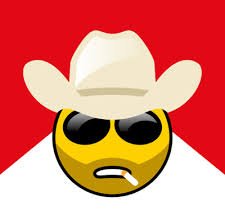Coaches lead highest caliber wounded warrior athletes
– APRIL 10, 2012POSTED IN: RECOVERY CARE
IN: RECOVERY CARE , WOUNDED WARRIOR PROGRAMS
, WOUNDED WARRIOR PROGRAMS
 , WOUNDED WARRIORS
, WOUNDED WARRIORS

 IN: RECOVERY CARE
IN: RECOVERY CARE


Whether the warrior athletes are missing a limb, have flexibility issues caused by scar tissue, or are quadriplegics, coaches John Schwent and Master Sgt. Howard Day will ensure they can shoot a firearm. 

 The coaches are leading wounded, ill and injured Service members and veterans to compete in firearm shooting events during the third annual Warrior Games, April 30 through May 5, in Colorado Springs, Colo.
The coaches are leading wounded, ill and injured Service members and veterans to compete in firearm shooting events during the third annual Warrior Games, April 30 through May 5, in Colorado Springs, Colo.







 The coaches are leading wounded, ill and injured Service members and veterans to compete in firearm shooting events during the third annual Warrior Games, April 30 through May 5, in Colorado Springs, Colo.
The coaches are leading wounded, ill and injured Service members and veterans to compete in firearm shooting events during the third annual Warrior Games, April 30 through May 5, in Colorado Springs, Colo.





Coach John Schwent, Wounded Warrior Regiment

Coach John Schwent (right), All-Marine shooting coach, assists Marine veteran Cpl. Nick Beach (left) during the 2011 Warrior Games shooting final. Nick took home the gold in air rifle standing. (Photo courtesy of DVIDS/Aquita Brown)

“Marines don’t like to cry, but seeing these Marines overcome their injuries and excel does make your eyes sweat a little,” said John Schwent. “They are pretty incredible.”



As the U.S. Marine Corps Wounded Warrior Regimentshooting team head coach, John is definitely in it to win it again for the 2012 Warrior Games .
.  The shooting team won 21 out of 23 medals at last year’s Warrior Games, which John says is a testament to the success of the program and the Marines.
The shooting team won 21 out of 23 medals at last year’s Warrior Games, which John says is a testament to the success of the program and the Marines.



 John spent more than 22 years in the Corps as a marksmanship instructor and competitive shooter.
John spent more than 22 years in the Corps as a marksmanship instructor and competitive shooter.



 He retired as a major in 2008 and is also a disabled veteran. He has been coaching Marines for the Warrior Games since 2010.
He retired as a major in 2008 and is also a disabled veteran. He has been coaching Marines for the Warrior Games since 2010.





 .
.  The shooting team won 21 out of 23 medals at last year’s Warrior Games, which John says is a testament to the success of the program and the Marines.
The shooting team won 21 out of 23 medals at last year’s Warrior Games, which John says is a testament to the success of the program and the Marines.



 John spent more than 22 years in the Corps as a marksmanship instructor and competitive shooter.
John spent more than 22 years in the Corps as a marksmanship instructor and competitive shooter.



 He retired as a major in 2008 and is also a disabled veteran. He has been coaching Marines for the Warrior Games since 2010.
He retired as a major in 2008 and is also a disabled veteran. He has been coaching Marines for the Warrior Games since 2010.





“We coach them from ‘How can I?’ to ‘Yes, I can,” said John.







 “We evaluate each Marine and each injury and then work on adaptive shooting positioning to compensate for the injury. Positioning is key. If there is a willingness, we will find a way to accommodate.”
“We evaluate each Marine and each injury and then work on adaptive shooting positioning to compensate for the injury. Positioning is key. If there is a willingness, we will find a way to accommodate.”




















 “We evaluate each Marine and each injury and then work on adaptive shooting positioning to compensate for the injury. Positioning is key. If there is a willingness, we will find a way to accommodate.”
“We evaluate each Marine and each injury and then work on adaptive shooting positioning to compensate for the injury. Positioning is key. If there is a willingness, we will find a way to accommodate.”













Retired Marine Lance Cpl. Lance Weir received a gold medal at the Shooting Finals at the 2011 Warrior Games at the Olympic Training Center in Colorado Springs, Colo.  (Photo courtesy of DVIDS/Cpl. Kayla Hermann)
(Photo courtesy of DVIDS/Cpl. Kayla Hermann)
 (Photo courtesy of DVIDS/Cpl. Kayla Hermann)
(Photo courtesy of DVIDS/Cpl. Kayla Hermann)
Marine veteran Lance Weir, a quadriplegic, showed up to the Warrior Games trials in 2011 not expecting to be able to shoot because of his injury. 



 Lance just wanted to be around other Marines but he expressed a desire to shoot. John worked with his team and made it happen.
Lance just wanted to be around other Marines but he expressed a desire to shoot. John worked with his team and made it happen.  Lance began the training process and was on his way to excelling as a shooter.
Lance began the training process and was on his way to excelling as a shooter. 
 He won gold at the 2011 Warrior Games and is now training for the U.S. Paralympicsteam.
He won gold at the 2011 Warrior Games and is now training for the U.S. Paralympicsteam.
 Lance will also be competing in the Warrior Games again this year.
Lance will also be competing in the Warrior Games again this year.








 Lance just wanted to be around other Marines but he expressed a desire to shoot. John worked with his team and made it happen.
Lance just wanted to be around other Marines but he expressed a desire to shoot. John worked with his team and made it happen.  Lance began the training process and was on his way to excelling as a shooter.
Lance began the training process and was on his way to excelling as a shooter. 
 He won gold at the 2011 Warrior Games and is now training for the U.S. Paralympicsteam.
He won gold at the 2011 Warrior Games and is now training for the U.S. Paralympicsteam.
 Lance will also be competing in the Warrior Games again this year.
Lance will also be competing in the Warrior Games again this year.



“The greatest benefit of the program is showing our Marines that they can do the same things they used before their injury and sometimes even better,” he said. “They participate in the Warrior Games trials and see how they can adapt and how much they can grow. Lance said to me that we had changed his life forever. That’s what it’s all about.”
“They participate in the Warrior Games trials and see how they can adapt and how much they can grow. Lance said to me that we had changed his life forever. That’s what it’s all about.”











 “They participate in the Warrior Games trials and see how they can adapt and how much they can grow. Lance said to me that we had changed his life forever. That’s what it’s all about.”
“They participate in the Warrior Games trials and see how they can adapt and how much they can grow. Lance said to me that we had changed his life forever. That’s what it’s all about.”











Service members involved in the Warrior Games also have the opportunity to teach and learn from each other. John said they truly benefit from relating to someone going through the same challenges.





“Morale, confidence and motivation goes up,” said John. “Adaptive sports can really help lessen their feelings of depression. It is a reason for living.”





Coach Master Sgt. Howard Day, Warrior Transition Command































Spc. Justin Miller (left) receives one-on-one training from Master Sgt. Howard Day (right), the Army’s Warrior Games shooting coach during the first Warrior Transition Command (WTC) shooting clinic held March 14-17 in El Paso, Texas. (Photo courtesy of Warrior Transition Command/ Staff Sgt. Emily Anderson)
(Photo courtesy of Warrior Transition Command/ Staff Sgt. Emily Anderson)
 (Photo courtesy of Warrior Transition Command/ Staff Sgt. Emily Anderson)
(Photo courtesy of Warrior Transition Command/ Staff Sgt. Emily Anderson)
“Something happens to a warrior when they pick up a weapon again,” said Master Sgt. Howard Day.








 “No matter what their injuries or medical conditions are, they seem to sit up or stand up a little straighter.”
“No matter what their injuries or medical conditions are, they seem to sit up or stand up a little straighter.”







































 “No matter what their injuries or medical conditions are, they seem to sit up or stand up a little straighter.”
“No matter what their injuries or medical conditions are, they seem to sit up or stand up a little straighter.”

















Master Sgt. Day is returning for his second year as U.S. Army Warrior Transition Command shooting coach for the Warrior Games team. Master Sgt. Day started competition shooting with the Army in 1990. After transferring to the Army Reserves, he competed for several years on the civilian shooting circuits. As a 14-year veteran in law enforcement, he has taught basic police academy firearms qualification classes, “active shooter” training, and precision rifle courses. He is National Rifle Association Instructor certified and holds a Master Peace Officer license in the State of Texas. He is currently attending the United States Sergeants Major Academy Resident’s Course-Class 62.

He was injured in Afghanistan in 2009 while serving as the Non-Commissioned Officer in Charge of an Embedded Training Team .
. He spent seven months as a wounded warrior at the Warrior Transition Unit at Fort Sill, Okla.
He spent seven months as a wounded warrior at the Warrior Transition Unit at Fort Sill, Okla.
 During his recovery, he joined the WTC headquarters team, which eventually led to his involvement in the Warrior Games. Durina
During his recovery, he joined the WTC headquarters team, which eventually led to his involvement in the Warrior Games. Durina





















 He is currently a student at the United States Sergeants Major Academy Resident’s Course, but he makes the time to continue serving as coach for the Warrior Games.
He is currently a student at the United States Sergeants Major Academy Resident’s Course, but he makes the time to continue serving as coach for the Warrior Games.
 .
.
 During his recovery, he joined the WTC headquarters team, which eventually led to his involvement in the Warrior Games. Durina
During his recovery, he joined the WTC headquarters team, which eventually led to his involvement in the Warrior Games. Durina







“I love teaching the shooting sports to all levels of participants, from novice to experts, but the personal reward of watching these warriors hone their skills and compete will keep me coming back,” he said





 . “I’m honored to work with these warrior athletes and cannot imagine a better way to do it.”
. “I’m honored to work with these warrior athletes and cannot imagine a better way to do it.”








 . “I’m honored to work with these warrior athletes and cannot imagine a better way to do it.”
. “I’m honored to work with these warrior athletes and cannot imagine a better way to do it.”





[Rural Civil Defense TV Spots 1965] (1965)
To host clinics and provide the best training opportunities possible for the shooting team, WTC partnered with several subject matter experts:

- The University of Texas El Paso (UTEP) Women’s Shooting Team


- UTEP Reserve Officer Training Corps (ROTC)


- UTEP coaching staff






- Army Marksmanship Unit at Fort Benning, Ga.



- Comprehensive Soldier Fitness-Performance and Resilience Enhancement Program (CSF-PREP)


- Warrior Transition Battalion-Fort Bliss, Texas
.jpg)


Shooting athletes listened to Master Sgt. Howard Day (left), the Army’s Warrior Games shooting coach, during a formation at the Warrior Transition Command’s shooting clinic in El Paso, Texas. (Photo courtesy of Warrior Transition Command/Staff Sgt. Emily Anderson)
(Photo courtesy of Warrior Transition Command/Staff Sgt. Emily Anderson)
 (Photo courtesy of Warrior Transition Command/Staff Sgt. Emily Anderson)
(Photo courtesy of Warrior Transition Command/Staff Sgt. Emily Anderson)
“I won’t give away all of our training secrets, however I will say that I believe this sport is 81percent mental,” he said.  “The CSF-PREP program sets our team up for success.”
“The CSF-PREP program sets our team up for success.”




 “The CSF-PREP program sets our team up for success.”
“The CSF-PREP program sets our team up for success.”




He believes the Warrior Games allows soldiers an opportunity to expand their range of capabilities.



 They see that a door or two may have closed for them, but many more have opened.
They see that a door or two may have closed for them, but many more have opened. 

 Popout
Popout




 They see that a door or two may have closed for them, but many more have opened.
They see that a door or two may have closed for them, but many more have opened. 

 Popout
Popout
Popout He says that watching their peers with similar injuries—or even more extensive than their own—competing at this level inspires and motivates them.
He says that watching their peers with similar injuries—or even more extensive than their own—competing at this level inspires and motivates them. 









“These warriors have overcome incredible obstacles, and meeting challenges is something that soldiers do very well,” he said. “Participating in the Warrior Games is no different. They take that motivation and share it with everyone around them.”
Shooting Competition

 The coaches help the warrior athletes with modifications, their mental game and exercise. Modifications can be made to the gun, as well as to how athletes actually position their bodies for shooting. Some events also allow warrior athletes to use spring stands and to shoot in a seated position.
The coaches help the warrior athletes with modifications, their mental game and exercise. Modifications can be made to the gun, as well as to how athletes actually position their bodies for shooting. Some events also allow warrior athletes to use spring stands and to shoot in a seated position.
 Mental management elevates the chances of hitting the bull’s-eye time after time. The warrior athletes may also participate in various physical conditioning exercises to prepare muscles for holding the firearm for the required amount of time
Mental management elevates the chances of hitting the bull’s-eye time after time. The warrior athletes may also participate in various physical conditioning exercises to prepare muscles for holding the firearm for the required amount of time .
.
Sport rules for the shooting competition are modified from Paralympic competition rules to suit the population of the Warrior Games. Each service is allowed a set number of representatives for each event. Army (54),
Army (54),  Marine Corps (30),
Marine Corps (30), Navy/Coast Guard (21),
Navy/Coast Guard (21),  Air Force (15) and
Air Force (15) and Army Special Operations Command (13)
Army Special Operations Command (13)  representatives will be competing.
representatives will be competing.  There will be three shooting events:
There will be three shooting events:
 There will be three shooting events:
There will be three shooting events:- 10M Air Pistol (40 shots)


- 10M Air Rifle – Standing (40 shots)



- 10M Air Rifle – Prone (40 shots)

Good luck to all the shooting teams at the Warrior Games this year!









Nenhum comentário:
Postar um comentário